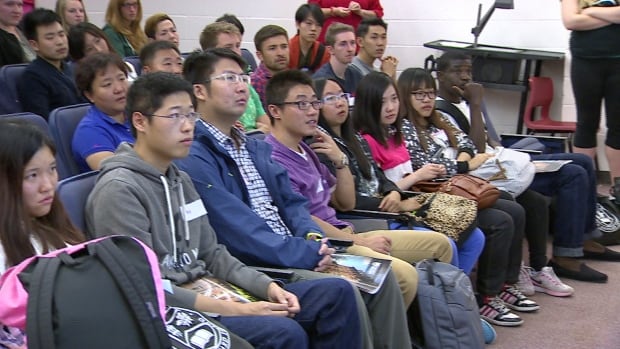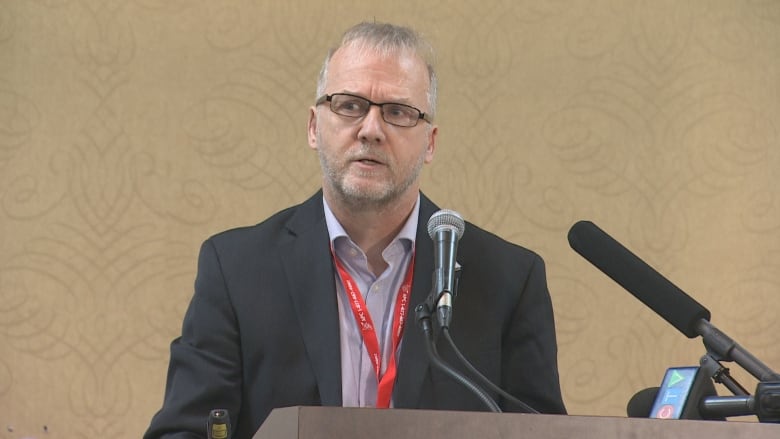
More than 20,000 people have arrived from other countries, roughly 10,000 are foreign nationals living on P.E.I. with temporary permits and a greater number have arrived from other parts of Canada than the almost 30,000 who left for other provinces.
This motion of people has caused crises in housing, health care and general pressure on provincial infrastructure of all kinds.
The mass migration to and from P.E.I. dates back to 2015, when Wade MacLauchlan became leader of the Liberal Party and premier at the same time.
MacLauchlan spoke about immigration, as well as keeping talented Islanders at home and attracting them back. He expressed concern about an aging population and the need to rejuvenate.
Accelerated population growth began almost immediately.

Annual growth to July 1, 2015, was 0.4 per cent. The next year it leaped to 1.6 per cent.
An official five-year strategy was launched in 2017 with a goal of reaching a population of 160,000 by 2022. The province blew past that a year early, and by 2022 there were more than 167,000 Islanders.
Growth rates set new records in 2022 and 2023, approaching four per cent before dropping just below three per cent last year.
Statistics Canada, in a release this week, set the Island population at 178,550.
The years since 2015 left the Island transformed.
There are 23.4 per cent more Islanders now than there were in 2015, a rate of growth far faster than any other province. Coming in second is British Columbia, with a growth rate of 19.5 per cent.
To put P.E.I.’s number in perspective: population growth of 23 per cent took 40 years leading up to 2015.
There are no doubts this rapid population growth has caused problems.
Whether the growth has addressed the core issue that concerned MacLauchlan — the aging population — is another question. Atlantic Economic Council senior policy analyst Fred Bergman finds the picture mixed.

“There’s a lot of people moving to the Island. Some of them are younger,” Bergman said.
“But at the same time, when you look closely at the data, there’s been significant gains in some of the older people.”
One quick measure of the age of a population is median age, or the age where there is an equal number of people older and younger in a population. P.E.I.’s median age has dropped by more than two years to 41.3, but that’s still a year older than the national average.
Keeping the economy going
The key problem faced by an aging population is whether there are enough people working to keep the economy going.
As a rough measure of this, economists use the dependency ratio: the number people aged 0 to 14, plus the number of people over 65, divided by the number of people aged 15 to 64.
The measure assumes people aged 15 to 64 are doing the work of the economy, and those younger and older depend on them.
“If you have an economy that’s massively made up of dependents, whether it’s young children or seniors, you’re not going to be able to support a lot of programs. You’re not going to be able to be very productive as an economy,” said Bergman.
The dependency ratio on P.E.I. is virtually the same in 2024 as it was in 2014: 53 per cent.
The answer to the paradox of a falling median age and a static dependency ratio is revealed in a closer look at the numbers, including a strong shift within that 15- to 64-year-old demographic.
Despite the much larger population, there were actually more Islanders in their 50s in 2014 than there are now. This is balanced by a huge spike in the number of Islanders in their 20s.
That population shift within the 15 to 64 demographic has brought down the median age, but has had no impact on the dependency ratio.
Where the new Islanders came from
When we think about population increase, the first thing that usually comes to mind is more people being born than dying — known as natural increase.
But since 2015 natural increase has been a drag on population growth, with a total loss of more than 300. This is one of the consequences of an aging population.
That leaves migration, and in every category — immigration, inter-provincial migration and non-permanent residents — 20-somethings were the largest cohort.
Since 2015 there have been almost 8,000 immigrants in their 20s, and the province saw a net gain of 2,000 residents in their 20s through inter-provincial migration.
Currently more than 5,000 non-permanent residents on the Island are in their 20s.
This influx has been painful in some ways, with infrastructure in many sectors stretched. But it has the potential upside of a large population of people who may contribute to the Island economy for another 30 to 40 years. At this point, however, that upside is only potential.
“There’s a risk that some will leave,” said Bergman.
P.E.I. has a history of this. Its immigrant retention rate is the lowest in the country. At last measure it retained only 50 to 60 per cent of immigrants after five years. There are also signs that migration patterns are shifting. Every year from 2020 to 2023 the province gained more than 1,000 residents from inter-provincial migration. In 2024 that gain was only 82.
The very crises that rapid population growth has caused may be driving people away. But Bergman notes escaping those problems could be difficult.
“We have problems with health care, housing infrastructure and a lot of infrastructure all across Canada,” said Bergman.
“So where are they going to go to avoid those issues?”
Another paradox
With this boost in people in their 20s living on the Island, typically among the most fertile people in a population, a corresponding increase in the birth rate might be expected.
But the opposite has happened. This is partly a reflection of falling birth rates across the country and around the world, but the rate has fallen more quickly on P.E.I.
In 2015, the total fertility rate on P.E.I., or average number of children a woman is expected to have, was about the same as the national average at 1.6. By 2023 it had fallen to 1.16, as compared to 1.26 nationally.
The drop in age-specific fertility rates, a measure of the number of live births per thousand women, was particularly sharp for P.E.I. women in their 20s, falling from 80.1 to 46.
That’s a big part of why natural increase on P.E.I. is increasingly negative.
But if you consider the life situation of these young women, the paradox is not surprising. Thousands of Island women in their 20s have recently experienced a major move, internationally or from another province. Following that, it is going to take some time for them to start a family.
“It might be a decade before you start to see … that natural rate of increase turn from a negative to a marginal positive,” Bergman said. “But it’s going to be hard to get there because we still have aging demographics.”
Putting on the brakes
Population growth slowed a little on the Island last year, and that trend is expected to continue. The federal government is putting the brakes on new non-permanent residents and, to a lesser degree, immigration.
“They’re trying to reduce the pressure on infrastructure, especially housing,” said Bergman.
“They’re trying to cool things down and allow building and programs and the infrastructure that supports a higher population to catch up, but in doing so you’ve got to take things out of the economy.”
The resulting reduction in the number of international students alone on P.E.I. could cost the provincial economy as much as $100 million, he said.
It’s a balancing act, said Bergman, and the P.E.I. government also has its hand on the scales. It updated its population plan earlier this year with the goal of slowing growth, targeting a population of 200,000 in 2030.
Whether that will provide the rejuvenation the province still needs while providing time for its infrastructure to catch up remains to be seen.